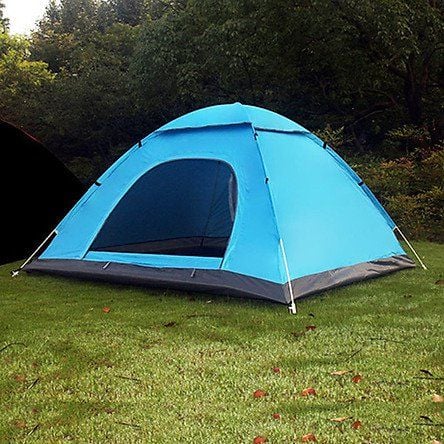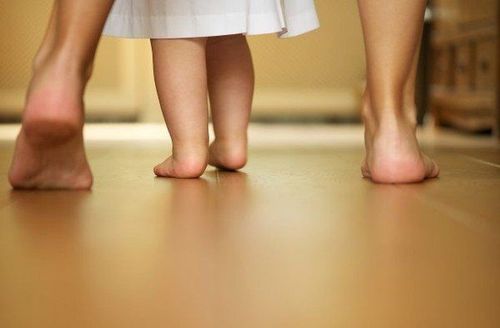This is an automatically translated article.
Researchers determined that the risk of mental health problems is reduced by 15 - 55% in families that raise children close to nature. The more green spaces children are exposed to before the age of 10, the better their long-term mental health.
1. Research on the link between children's green space and mental health
A new study shows that exposure to green spaces for children enhances mental resilience into adulthood. These findings hold true for both rural and urban foster families. This means you don't have to move to the countryside to enjoy the benefits of nature. Instead, families just need to make it a habit to take their children out to the nearest park or green space.
Researchers in Denmark set out to find out if growing up near trees affects mental health in the long run. They compiled information on nearly 1 million Danish residents born between 1985 and 2003, including their mental health, place of residence over time, family income and history of mental illnesses, and then Mapping the greenery around the home of children from birth to 10 years old.
After controlling for risk factors, the researchers found that children who grew up near green spaces such as parks and forests, had a reduced risk of developing 16 mental disorders as adults, including include depression , anxiety and alcoholism , compared with children who did not grow up near green spaces.

Trẻ sống trong không gian xanh thường xuyên sẽ hạn chế tình trạng tự kỷ
Other, smaller studies also show a link between children's green space and improved mental functioning. For example, a study in Spain found that children who attended schools with lots of trees performed better on cognitive tests than those from schools with less vegetation.
It is not clear why trees help improve mental health. According to the authors, green spaces for children can provide many opportunities for exercise and socializing with others. And this is very good for the brain. Vegetation can also filter out air pollution, which is linked to mental health problems.
Of course, not everyone has access to children in a house with a garden, or easy access to green areas. But this research should inspire you to find ways to get your kids outside, whether it's a trip to the park or a walk to a neighboring farm, to help promote health.
2. Ways to raise children close to nature
On days when the weather is nice, the kids will want to get outside more and enjoy the fresh nature. Parents themselves also want their children to be happy and leave the cramped house, away from the TV screen and technology devices, to run around with friends.However, many families are often stuck indoors due to the weather and busy schedules, the children will whine that they are bored or are glued to the screen because there is nothing to do. Here are a few ideas for nurturing children in nature:
Hunting for flora and fauna Whether you live in the city or in the countryside, you can go on a hunting trip with your child. Make a list of animals to find along the way. Older children can use their phones to take pictures or collect their findings directly to box and take home. Young children can be tasked with finding simple items such as leaves, flowers, and pebbles and rocks. Give your child a small reward after the hunt for completing a nature collection.
A tool bag Prepare a special basket for your child to take with them when they go out to play. The bag should have items such as: balls, chalk for painting on the sidewalk, jump rope, soap bubble tools and other games suitable for outdoor.
Family outings Plan a few outings with the whole family. Even a newborn can be put in a crib, carry a diaper bag and go outside to play. The whole family can visit a farm or zoo to see the animals; participate in seminars on animal or horticultural topics; Go to a strawberry farm to pick up a fresh box.

Những chuyến dã ngoại sẽ giúp trẻ được gần gũi với thiên nhiên
Build obstacles Use simple items around the house, then build a few obstacles for your child to explore for hours. You can use children's tunnels, colorful swings, plastic traffic poles, etc. to let children crawl, jump and wriggle through until tired.
Freedom is dirty Children love to get dirty, so create a sand pit, fill it with water and let them play freely there. Try not to get upset over the mess your child has made, but instead put on a big smile and give her a good bath when it's all over. It will also make them feel very happy. Even a 1-year-old can participate in this game!
Play outside with the kids Plan a family walk, visit the park, go swimming and prepare a picnic. Have your child cycle on a four-wheeler on the safe side of the road and pick wildflowers from the roadside. Many wonderful memories will be kept through this outing to find green space for children.
Camping in the backyard Every child dreams of sleeping outdoors under the vast night sky full of stars. But planning and executing a real camping trip requires a lot of time and effort. So why not set up camp right in your backyard, balcony or rooftop? Set up a tent, cover with a blanket and turn on a flashlight, then the whole family can get in and play silly but fun games. Plus, if she suddenly doesn't want to sleep outside, her familiar room is still right there. The camping experience will be further enhanced by having a barbecue there.

Cắm trại sau nhà sẽ tiết kiệm cho ba mẹ và trẻ vấn sẽ có những trải nghiệm tuyệt vời
Green space ideas for kids will bring a day off full of fun games, discoveries and experiences. Before taking your children out to play, prepare plenty of water for them to drink and protect themselves from the sun. Everyone in the house should wear a wide-brimmed hat to cover their face, neck and ears, and don't forget to apply sunscreen.
Reference source: babycenter.com













